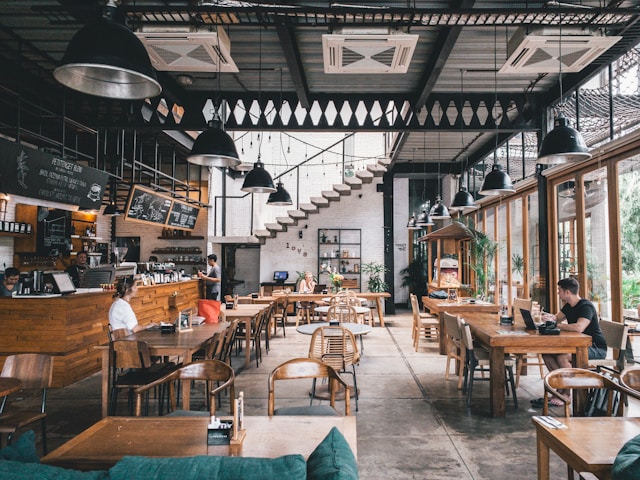Opening a cafeteria or restaurant in the UAE can be a profitable business venture as food and beverage industry is thriving. Whether you choose to set up in a freezone or on the mainland, understanding the process and requirements is essential for a smooth start. Here’s a simple, clear guide to help you navigate the journey of opening a cafeteria in the UAE.
Freezone vs. Mainland
- Freezone:
- 100% foreign ownership allowed.
- Can only operate within the freezone and internationally, however, you may set up space outside of freezone by obtaining an NOC.
- Generally higher setup and operational costs due to additional fees and regulations but no profit sharing.
- Faster setup process with streamlined procedures.
- Mainland:
- Requires a local sponsor (UAE national) who holds a 51% share in the business.
- Can operate anywhere in the UAE.
- Potentially lower initial costs, but profit-sharing with a local sponsor is required.
- Slightly longer due to more detailed regulatory procedures.
Required Documents
For an individual shareholder (professional license):
- Professional License from DED
- Five proposed cafeteria names
- Shareholder’s passport copy (with visit or resident visa page)
- Emirates ID copy (for UAE residents)
- No Objection Letter from the sponsor (for UAE residents)
- Layout plan of the premises (if shop size exceeds 200 sq. ft.)
Steps to Open a Cafeteria/Restaurant
- Business Plan: Outline your concept, target audience, menu, and financial projections.
- Market Research: Analyse the competition and identify potential locations where you can get a lot of customers.
- Business Structure: Decide whether you need a Limited Liability Company (LLC) or a sole proprietorship.
- Trade Name: Register a unique trade name with the Department of Economic Development (DED) or the relevant freezone authority.
- Initial Approval: Obtain initial approval from the DED (for mainland) or the freezone authority.
- Find a Local Sponsor (Mainland Only): Negotiate and draft an agreement with a local sponsor. Ensure clear terms on profit-sharing and operational control.
- Lease a Premises: Secure a tenancy contract for your cafeteria/restaurant premises.
- Municipality Approval: Obtain necessary approvals from the municipality for the layout and design of your cafeteria/restaurant.
- Obtain Necessary Permits:
- Food Safety Permit: Get approval from the Food Control Department.
- Health and Safety Permit: Ensure compliance with health and safety regulations.
- Trade License: Apply for a trade license from the DED (mainland) or the freezone authority.
- Hire Staff: Hire qualified staff, including chefs, baristas, and service personnel. Ensure all employees have valid labor cards and health certificates.
- Setup and Marketing: Complete the interior fit-out according to your approved layout. Establish relationships with reliable suppliers for fresh ingredients. In addition, launch a marketing campaign to attract customers by utilizing social media, local advertising, and promotions.
Cost Considerations
- Higher licensing fees, office rentals, and other operational costs.
- Mainland: Potentially lower licensing fees but requires profit-sharing with a local sponsor.
Food Safety Standards
- Hygiene and Sanitation:
- All staff handling food must maintain personal hygiene. Regular handwashing, clean uniforms, and proper grooming are essential.
- Keep kitchen surfaces, utensils, and equipment clean and sanitized. Regularly disinfect cutting boards, countertops, and cooking tools.
- Store raw and cooked foods separately to prevent cross-contamination. Maintain proper refrigeration temperatures (below 5°C or 41°F for perishables).
- Food Storage and Handling - follow safe temperature guidelines for different food items:
- Keep hot foods above 60°C (140°F).
- Refrigerate perishable foods below 5°C (41°F).
- Check expiration dates on ingredients and discard expired items promptly.
- Rotate stock to use older items first.
- Safe Food Preparation:
- Cooking Temperatures:
- Cook poultry such as chicken and turkey to an internal temperature of 75°C (167°F).
- Ensure ground meat reaches 70°C (158°F).
- Cook seafood including fish and shellfish thoroughly.
- Avoid Cross-Contamination:
- Use separate cutting boards for raw meats and vegetables.
- Wash hands after handling raw meat.
- Clean knives and surfaces between tasks.
- Allergen Awareness:
- Clearly label allergens (e.g., nuts, gluten, dairy) on your menu.
- Train staff to handle allergens safely.
- Prevent cross-contact by using separate utensils and surfaces.
- Food Display and Service:
- Maintain proper food temperatures during buffet service.
- Use sneeze guards to protect food from contamination.
- Provide separate utensils for each food item to prevent contamination.
- Label dishes with ingredients and allergens.
- Waste Disposal:
- Dispose of food waste properly to prevent pests and odors.
- Regularly clean trash bins and ensure proper waste segregation.
- Pest Control:
- Regularly inspect and treat for pests (rodents, insects, etc.).
- Seal entry points and maintain cleanliness.
- Staff Training:
- Train your staff on food safety practices.
- Conduct regular refresher courses.
To sum up, opening a cafeteria or restaurant in the UAE involves careful planning, understanding legal requirements, and making strategic decisions about your business location. At Firm Advice, we provide expert guidance and comprehensive services to help you navigate the process seamlessly. Contact us to start your journey towards establishing a successful cafeteria or restaurant in the UAE.





































































